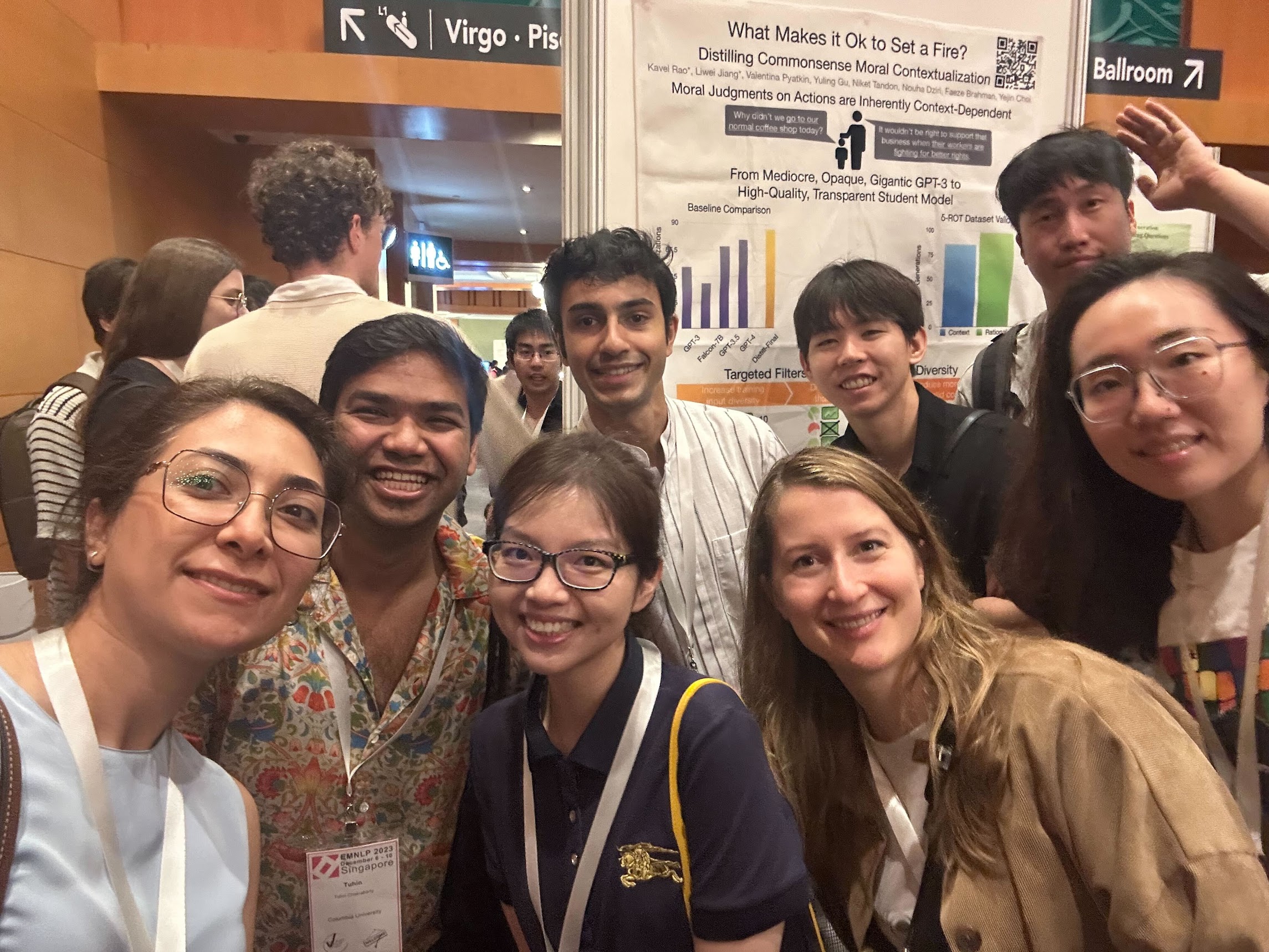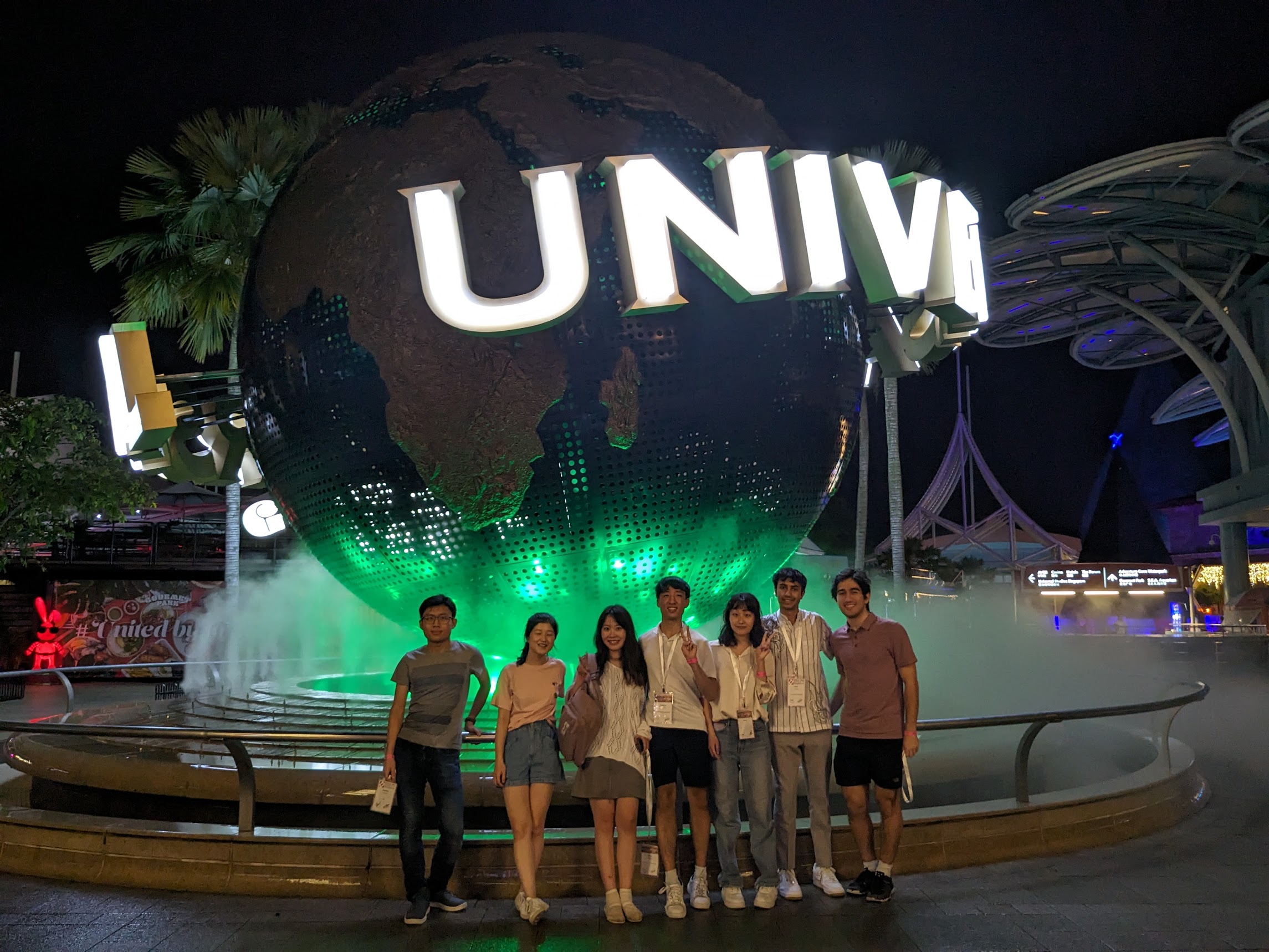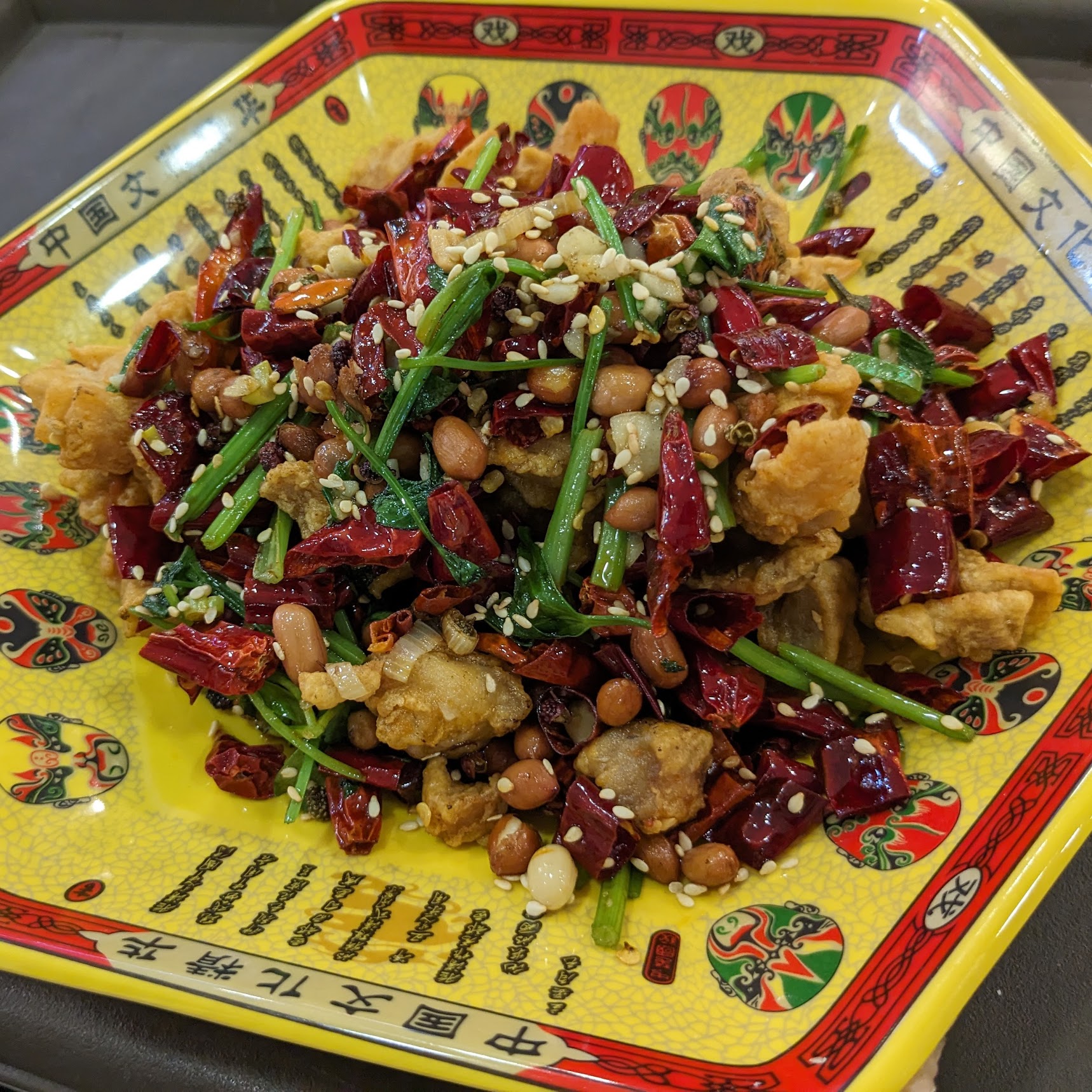EMNLP 2023 Conference Recap
24 Dec 2023I recently had the amazing opportunity to attend my first research conference at EMNLP1 2023 in Singapore. The five days of the conference were an absolute blur, packed with almost nonstop activity from poster sessions to coffee break conversations with other researchers. The conference was everything I could have hoped for – I learned about so many interesting research directions, connected with the NLP community, and even got the chance to present my own work!

Tutorials and Workshops
In the first two days I attended several workshops and tutorials. I particularly enjoyed the Creative Natural Language Generation tutorial on day 1, which covered several subtopics from figurative language to music generation to visual metaphors. Despite having no previous exposure to the area, the wide range of talks in the program helped me put together a preliminary survey of creativity exploration in NLP. One interesting snippet was a method to generate a dataset of metaphors and their literal paraphrases2 by finding metaphoric verbs in poetry excerpts, replacing them with literal verbs using a pretrained BERT model, and ensuring both versions have the same symbolic meaning through a commonsense model called COMET3. Data is often the biggest bottleneck in NLP projects, and my own project involves automatic dataset generation, so seeing this method to create parallel data pairs which can be used to train classification and generative models was really cool. They also presented works about puns, including a backward-forward decoding method to ensure including the pun word with double meaning in generation 4 and notions of local and global surprisal to guide pun effectiveness5.
The highlight of the tutorial for me was a presentation of the Torrance Test of Creative Writing inspired from psychology to evaluate text (specifically short stories) for creativity based on 14 attributes6. It was really interesting to think about how to pin down specific characteristics of what makes up creativity, which seems like such an amorphously human concept. Their test definition seems quite promising and is rooted in psychology research, but current language models perform poorly and the test relies on expert annotations for each case – I think that there’s a lot of room to grow in both the directions of task evaluation and performance here. Finally, the tutorial expanded on additional use-cases for LLMs used as tools by human authors, such as early and quick feedback on writing - the idea is an LLM won’t judge your half-baked writing, and it could provide useful suggestions to incorporate before showing your work to real people7.
Main Conference
During the main conference, I preferred the poster sessions over oral talks because of the exposure to more ideas and greater interaction. Some of my favorite posters were Does Writing With Language Models Reduce Content Diversity?8, Text Embeddings Reveal (Almost) As Much As Text9, and When the Majority is Wrong: Modeling Annotator Disagreement for Subjective Tasks10. Although crowded, the poster sessions were really fun to see so many diverse ideas, some in corners of NLP research I hadn’t even considered before. I ended up chatting with or getting lunch with several of the presenters I visited, and it was great to hear more context about their personal research journeys and other works in a more personal context.
Presenting a Poster
Presenting my own work about defeasible moral reasoning11 in a poster session was an amazing experience. I was worried people wouldn’t be interested, but I was actually surprised to the contrary! So many more people than I expected checked out the poster, and a good portion of them stayed for the whole pitch and asked questions – I even got contacts from some potential future collaborators. I felt so supported when my co-first-author and mentor Liwei12 and other collaborators visited, along with several others from the Allen Institute for AI! It was challenging to juggle presenting to people who arrived at different times, answering questions for those who already heard my spiel while also engaging new audiences. Overall, the presentation felt incredibly rewarding as a culmination of over a year of work and many hurdles along the way! Presenting the poster made me even more proud of our work and excited to start on my next project.

The “Hallway Track”
A unique aspect of the conference was getting to chat with researchers in the hallway between sessions13. Even though this isn’t on the conference program, the more casual face-to-face interaction felt like such a critical part of the experience. I even met some collaborators in-person for the first time all the way in Singapore! During coffee breaks, my friend Skyler14 and I strolled the hallways to introduce ourselves to people (some we recognized, others who just seemed open to chatting) to hear about their work, find common interests, and generally get to know other researchers. I was impressed by Skyler’s ability to recognize people he’d only seen online before - it was a lot easier to strike up a conversation when we already knew someone’s general area of interest. After the main conference opening keynote by Jong Park, we ran into the speaker and had a nice conversation! We talked about the importance of multiculturality in NLP, and he even gave us a book recommendation. These human moments connecting with researchers helped transform my mental image of the “NLP community” from just a list of names atop papers into real people with unique perspectives.
The social event at Universal Studios was such a blast and a great way to get to know people better. I toured the rides with a UW and AI2 group, and it was so fun to hang out with them in a completely different context from the formal conference. As people went to bed the lines kept getting shorter - in the last hour we could get on any ride we wanted without waiting! We found a crowd of NLP researchers queueing up for the Transformers ride to be kind of hilarious, and there may have been a couple jokes about the Bert figurine on Sesame Street…

Singapore
Because the conference schedule was so busy I didn’t have time to explore Singapore itself much, although I’m lucky that I’ve visited before and checked off most of the tourist spots. I did thoroughly enjoy the food - the hotel breakfast had an amazingly diverse selection from century eggs to chicken curries, and the couple hawker centers I visited with Skyler were fantastic and incredibly cheap. The diverse population of Singapore really shows through the food, with so many different cuisines represented so well.


Final Thoughts
After getting a taste of what a research career could be like through the conference, I’m looking forward to continuing on this path. Meeting so many diverse people all passionate about their own corner of research and NLP was incredibly inspiring; each researcher is an expert in the domain they find most important and interesting. There are so many areas left to explore, and I’m excited to carve out my own niche in the field as I develop my research vision.
Footnotes
-
Empirical Methods in Natural Language Processing ↩
-
Metaphor Generation with Conceptual Mappings - Stowe et al. 2021 ↩
-
COMET: Commonsense Transformers for Automatic Knowledge Graph Construction - Bosselut et al. 2019 ↩
-
Art or Artifice? Large Language Models and the False Promise of Creativity - Chakrabarty et al. 2023 ↩
-
Yes, an LLM provided feedback on a draft of this post ↩
-
Does Writing with Language Models Reduce Content Diversity? - Padmakumar & He 2023 ↩
-
Text Embeddings Reveal (Almost) As Much As Text - Morris et al. 2023 ↩
-
When the Majority is Wrong: Modeling Annotator Disagreement for Subjective Tasks - Fleisig et al. 2023 ↩